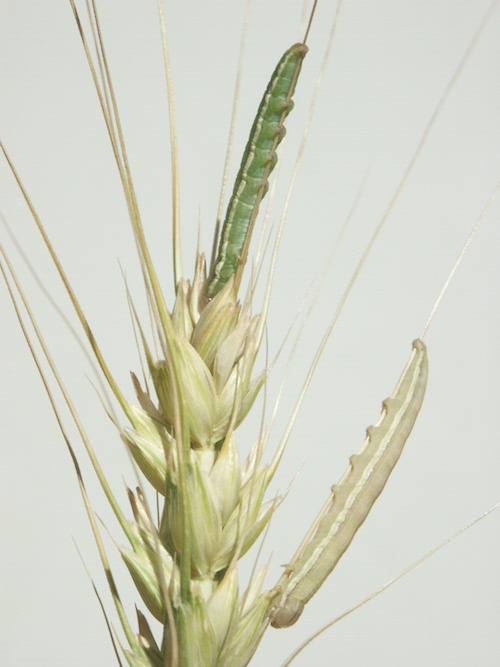Wheat Head Armyworm
Faronta diffusa
The wheat head armyworm, Faronta diffusa (Walker) (Lepidoptera: Noctuidae), is a minor pest of wheat in most years, but can occasionally cause noticeable damage to wheat kernels. Unfortunately, the first indication of a wheat head armyworm problem is often when wheat is downgraded at the elevator because of insect-damaged kernels (IDK), or when larvae are caught on grain screens at elevators. Damage to kernels by the wheat head armyworm is difficult to distinguish from that of certain stored product pests and is therefore classified ‘IDK’ on the assumption the grain is infested with stored product pests.
|
Adult moth. |
Larvae feeding. |

Wheat kernels damaged by wheat head armyworm (Phil Sloderbeck).
Page last updated 10/30/2013 by J.P. Michaud.

